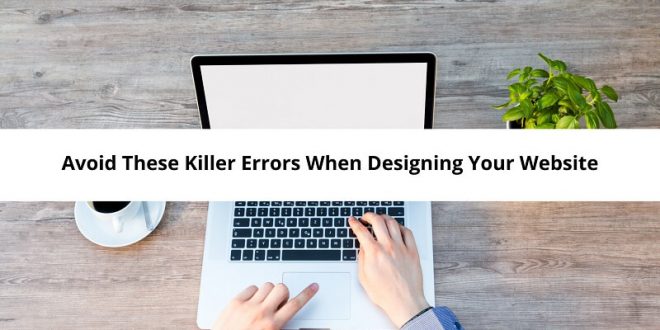The Four Common Website Problems: You Must Avoid Them
Do you remember a time when you experienced difficulty navigating a website? What if there were so many words on a page that it was difficult to find anything relevant? A website with a poor design or structure is frustrating.
Sites like yours are valuable real estate on the web. Follow these design principles and you'll retain customers and grow your following. Avoid these issues with your website and increase your online presence.
1. Cluttered homepages
Make your homepage a welcoming entryway for your site. Often, visitors get overwhelmed by homepages that have too much content.
A whole site is available to you. Don't put unnecessary images or text on your homepage.
2. Difficult to navigate
The navigation on your website should be intuitive so that visitors and prospective customers can easily find the information they're seeking.
Navigating your site is done through the menu. Each link should be clearly marked. Use language that is clear and concise when describing website sections. A wide variety of menu items appear on websites for intuitive, easy-to-understand reasons, like "Products," "Services," "Blog," and "Contact."
The hierarchy of your website should be logical. The menu tabs should contain links to subpages.
You should place this information under the "Services" tab rather than just your "About Me" page, for instance if you're an accountant providing tax advice.
3. Readability issues
Read and understand your website easily. Do not use too many font styles and font sizes. Having your site pages follow different aesthetics can confuse your visitors because consistency is comforting.
Avoid Comic Sans and bright colors. Your font, page layout, and style should instead convey your intended message clearly and consistently.
4. Design that is not responsive
94 percent of Americans own a smartphone, according to Pew. As a result, your site will likely receive a great deal of traffic from people using small screens.
So make sure your site is responsive so it looks good on desktop and mobile devices. The responsibility of a website changes depending on what device is being used. Make sure the buttons and menus on your site are large enough to be clicked on smaller screens, and keep your writing straightforward to capture the attention of mobile users. Because the themes are all responsive, WordPress.com ensures they are easy to use.
Checklist for designing your website:
Answer the following questions to avoid common website problems:
- How clean and clutter-free is your homepage? How much white space is there on the page?
- What is the average time visitors spend looking for what they want? Can visitors find the appropriate sections and pages via your menus and tabs?
- What kind of images or headlines do you use in your headers? How do you integrate bulleted lists and subheadings into your content? Are readers able to scan your post without having to scroll around or do they have to find relevant information by scrolling?
- Is every link on your site working? Do you use legible fonts that are consistent?
- Do you have a mobile-friendly website? Is the website's content readable without requiring you to zoom in and out?
This checklist can be used to assess your current user experience or before your site launches. You might attract more fans to your site by improving your search engine optimization by avoiding these common website problems.

